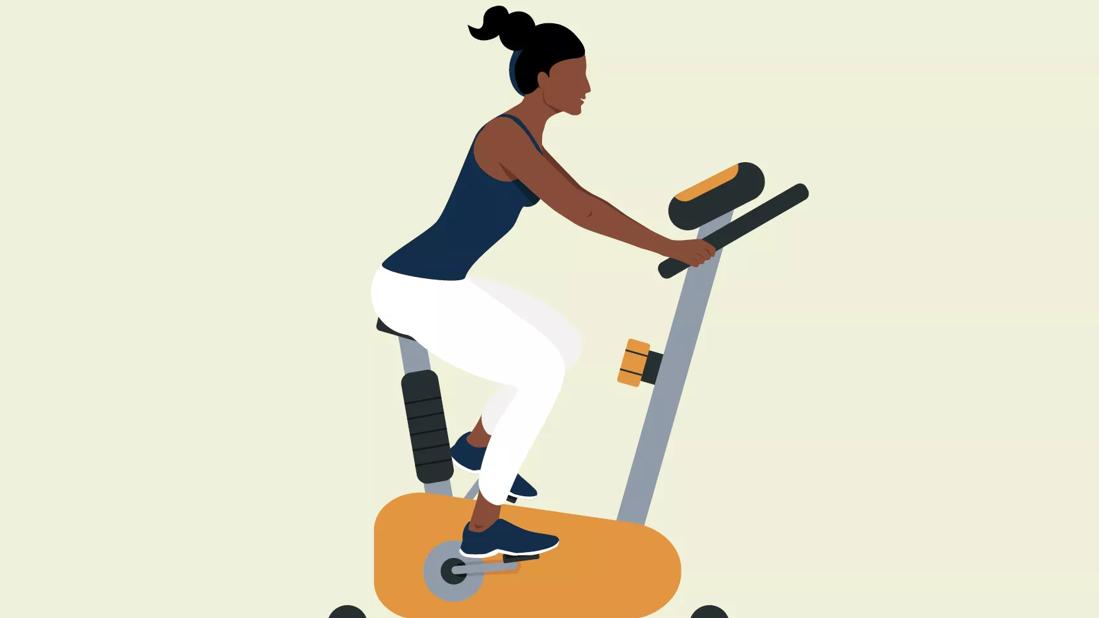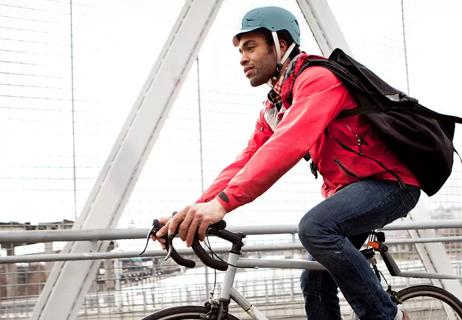How to make the most out of cycling

“Move your body.” That seems to be the general health advice when it comes to staying physically healthy. And there are many ways to do it. If you were a mermaid in another life, maybe you enjoy a challenging swim across the pool. If you’re a dancer at heart, perhaps you like a good Zumba class to start your day.
Advertisement
Cleveland Clinic is a non-profit academic medical center. Advertising on our site helps support our mission. We do not endorse non-Cleveland Clinic products or services. Policy
Or maybe, you’re craving two wheels, two pedals and an endless road ahead.
Cycling is more than just a popular hobby. Whether you’re on a dusty trail or in your favorite trendy cycling studio, there are many ways to enjoy and benefit from cycling.
Physical therapist Jaclyn Kubiak, PT, DPT, explains the great health benefits of cycling and how to start your routine today.
Cycling is often recommended as a low-impact and engaging workout for people of all ages. It’s an aerobic exercise and helps strengthen your heart, blood vessels and lungs.
Other aerobic exercises that have similar health benefits include:
In general, the recommendation is that adults should get about 150 minutes of aerobic exercise each week. Cycling is a good example of this because, according to Dr. Kubiak, it’s a perfect workout for those just starting an exercise routine.
“One of the major benefits of cycling is that it’s low-impact,” says Dr. Kubiak. She also points out that you can incorporate cycling into your daily life. A quick bike to work or the grocery store can contribute to your weekly workout goal.
Here are some great health benefits of cycling:
Like other aerobic exercises, cycling can build up your muscular strength and endurance. According to Dr. Kubiak, research has shown that indoor cycling helps build muscle in various parts of your lower body.
Advertisement
“Your hamstrings are being activated at about 17%, your quadriceps at 17% and the glutes are at 15 to 17%,” explains Dr. Kubiak.
Cycling helps with loosening your quadriceps, hamstrings, calves and hips. This way, your lower body is becoming more flexible over time. Plus, your core and arm muscles get a good workout.
Cycling can also improve balance. As you have to be in a specific position while riding an indoor or outdoor bike, it helps train your body to keep a better posture. If you’re wanting to improve your coordination, cycling can help stabilize your core.
“If you think about it, when you’re on the bike, you have to find that center of balance to stay upright,” says Dr. Kubiak.
Another benefit of indoor cycling is how easily you can incorporate other workouts into your cycling session. So, once you get really comfortable with cycling, you can start working out more than just your legs at the same time.
“You’re using your big leg muscles to cycle, which is already a huge benefit,” notes Dr. Kubiak. “But you can also do it in combination with strength training, or you can do it without.” This might be either using a pair of light hand weights while cycling or even doing different arm exercises. This way, you’re able to work out other parts of your body.
Cycling can also be good for your mind. For one, it helps create positive endorphins in your brain.
“It’s been shown that cycling reduces anxiety and depression,” says Dr. Kubiak. “Mainly, because you can make it fun. You get the added benefit of being outdoors or you can go do it with friends.”
And, if you’re just starting out, customizing your cycling experience makes it a more enjoyable workout.
“You can change the intensity for it yourself,” he adds. “It can be as easy as you want or as hard and enduring as you want.”
As cycling is a relatively low-impact exercise, it’s an ideal form of exercise if you have arthritis or osteoarthritis. This is because cycling doesn’t put a lot of stress on your joints.
Dr. Kubiak notes again that staying upright during cycling helps engage your core. When you engage your core, you begin to flatten your back, which then decreases back pain and causes less impact on your joints.
“When you’re moving your legs around and getting those joints moving, it then increases the joint fluid and increases blood supply to that area,” he explains. “You’re increasing all those things at the same time. Then that’s helping lubricate the joint, decreasing the pain that you’re having with arthritis.”
Advertisement
It’s not just about how much cycling you do, but also how you do it. It’s important not to overlook proper technique and safety when starting out.
The last thing you want is to get a stiff neck from cycling. To prevent this (or other injuries), make sure you’re in the right position on your bike.
“The biggest thing when we’re starting out or even if you’re becoming an expert in cycling, is making sure your bike fits correctly,” says Dr. Kubiak.
When you do find the right bike, make sure the pedals, seat and handlebars are adjusted properly to fit your needs. Otherwise, your body will feel sore after a long ride.
“Especially if you’re going for two hours and you’re in the wrong position, it’s not great for your body,” says Dr. Kubiak.
Once you get the right fit, it’s important to know what position to hold when riding your bike.
Some posture tips to remember when cycling:
Especially if you’re new to cycling, don’t push it. Just like any exercise, it’s important to start easy and build up difficulty as you go.
“Remember, the further you go out, the further you have to come back,” says Dr. Kubiak.
Advertisement
The same goes for indoor cycling — don’t pick an advanced exercise bike on your first day at the gym. Instead, Dr. Kubiak recommends setting small goals each day.
“Start easy with 15 minutes of riding and then see how you feel the next day. And then slowly start increasing,” suggests Dr. Kubiak.
You may be excited to hop on a bike right away, but it’s important to remember safety tips when cycling. If you’re experiencing any sudden or unusual pain while cycling, be sure to see your primary care physician or physical therapist.
When cycling outdoors, make sure to ride on designated bike trails and paths. When riding on a road, be sure to stay alert for oncoming traffic and pedestrians.
Here are some other safety tips to check off your list before going cycling:
Overall, cycling is a great exercise option for those on the go or wanting an easier workout. As long as you’re safe and start out slowly, this low-impact activity can help build strength, flexibility and more.
Advertisement
Learn more about our editorial process.
Advertisement

Whether you’re cycling consistently or occasionally, it’s important to have safety essentials like a helmet, shirts with sleeves, eye protection and more

Make sure their bike is the right size, find a helmet that fits properly and teach them the rules of the road

Adjust your bike seat, wear breathable clothing and don’t pop or pick!

Fit, duration and positioning are more important than you might think

Studies show the protective gear can significantly reduce head and brain injuries

Expert advice on helping your muscles repair and replenish

A consistent walking program is an effective way to drop pounds and lose body fat

From playful movement to strength-building, kids need exercise to stay healthy and strong

Start having sex about 72 hours before ovulation, then at least every other day during your fertile window

Attachment theory suggests that your earliest relationships shape connections throughout your life

It isn’t a recognized mental health disorder, but research shows that problematic social media use can negatively affect your mental health, self-esteem and sleep